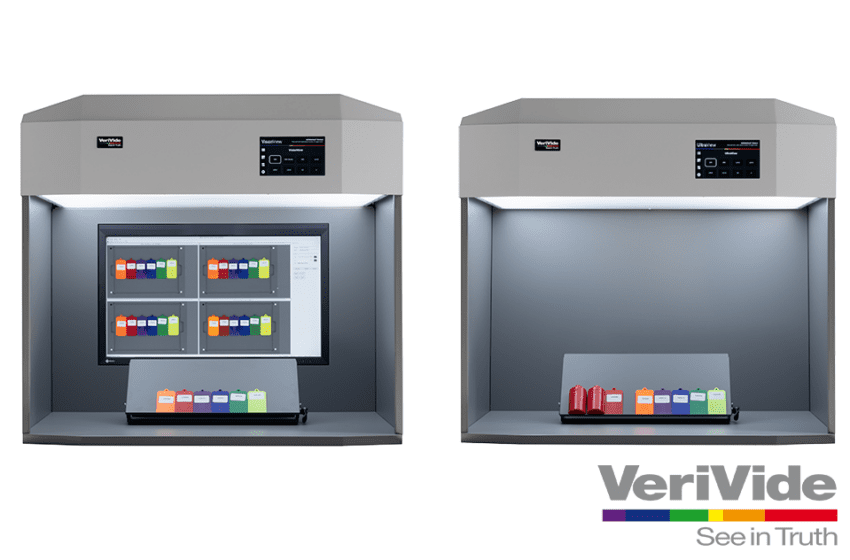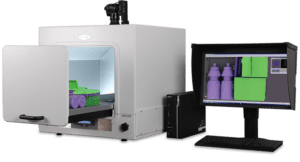
VeriVide Blog // Colour Management Solutions for the Plastic Industry
|
Getting your Trinity Audio player ready...
|
Plastic is an incredibly versatile material used in a wide variety of industries, particularly in the manufacturing of products and packaging for the food and drink sectors. Despite being man-made, plastics are derived from natural, organic materials such as cellulose, coal, and crude oil. This process involves polymerisation, which results in resins with an inherent base colour that often needs to be artificially altered to meet industry standards, create brand recognition, and enhance aesthetics. In this blog, VeriVide discusses the methods and considerations involved in plastic colouring, the importance of colour matching, and how their innovative solutions improve the process to achieve consistent, high-quality results in plastic manufacturing.
VeriVide provides innovative solutions for the visual assessment, digitisation, visualisation, and colour communication in the plastic industry, helping manufacturers streamline the plastic colouring process and ensure consistent, high-quality results.
Understanding Plastic Colouring Methods
Plastic resins must be artificially coloured for both functional and aesthetic purposes. Colouring methods are crucial for creating visually appealing products and for ensuring compliance with safety and industry standards, especially in sectors such as medical, electrical, and safety equipment. Four main methods are employed to colour plastic resins: Masterbatches, Pre-Coloured Resins (Compounds), Cube Blends, and Dry Colour.
1. Masterbatches
Masterbatches are one of the most cost-effective and widely used methods for colouring plastics. This process involves mixing concentrated pigments with a polymer carrier resin and adding it to the natural resin in small quantities. The mixture is then moulded into the desired shape, resulting in a coloured plastic product.
2. Pre-Coloured Resins (Compounds)
Pre-coloured resins are produced by incorporating pigments directly into the polymer during manufacturing. This method ensures that the pigments are 100% polymerised into the resin, allowing for uniform colour throughout the material. This method is preferred by professionals in the plastic industry for its consistency and ease of use.
3. Cube Blends
Cube blending involves dry blending masterbatches with natural polymers to create a uniform colour. This technique is particularly popular among moulders as it eliminates the need for complex equipment during the moulding process. Cube blends offer a cost-effective solution without compromising on colour accuracy.
4. Dry Colour
Dry colour, also known as powdered pigments, is one of the simplest and most economical methods for colouring plastic. By mixing pigments with natural pellets, manufacturers can achieve the desired colour without the need for complicated machinery.
The Colour Matching Process
One of the most critical steps in the plastic manufacturing process is colour matching. Colour matching ensures that the plastic products meet the exact requirements for consistency, appearance, and performance. The process involves using colour samples such as printed paper chips, Pantone numbers, or lab shots, which serve as a reference point for engineers to create specific colour concentrates for the product.
Several factors must be considered during colour matching, including the viscosity and melt processing temperature of the polymer. Additionally, the choice of pigment system, stabilisers, carrier resins, and additives must align with the polymer to achieve the desired colour accurately.
Key Considerations for Colour Matching:
- Gloss and Finish: The appearance of a colour can vary depending on the gloss level and the filler content of the polymer. For instance, the colour of nylon may appear different from that of acrylics. Tools such as the DigiEye from VeriVide can help assess the differences in appearance across materials.
- Environmental and Regulatory Factors: The environmental conditions and the regulatory standards of the target market must also be considered. For example, plastics used in medical, or food applications must comply with safety standards, ensuring non-toxicity and UV protection. The VeriVide UltraView All LED Light Booth is a valuable tool for assessing colour consistency under different lighting conditions and detecting metamerism (when colours appear differently under varying light sources).
Pre-Colouring Considerations
When preparing to colour plastics, it’s important to consider various factors to ensure a successful outcome:
1. Compatibility
The chemical compatibility between the colourant and the polymer is essential to prevent alterations to the polymer’s physical properties such as flexibility, temperature tolerance, or impact resistance. The Let Down Ratio (LDR) – the ratio of colourant to polymer – typically ranges from 1:100 to 5:100.
2. Pigment Levels
Higher pigment concentrations result in deeper colours, but excessive pigment can negatively impact the polymer’s properties. Striking the right balance is crucial for maintaining the quality of the end product.
3. Colour Properties and Durability
Certain colours may behave differently in various environmental conditions. Exposure to UV light or sunlight, known as weathering, can cause colour fading or changes, which is especially problematic in applications that demand high colour consistency. VeriVide’s DigiGrade System can be used to assess colour changes due to UV exposure and sunlight.
Speed Up Your Colour Communication with VeriVide Solutions
Once the colour samples are prepared, it’s crucial to communicate the colour efficiently and accurately to customers. VeriVide’s DigiView and the new VeriVide Portal offer instant digital solutions for colour communication, speeding up the approval process and reducing the costs associated with shipping physical samples. These digital tools provide real-time access to colour samples, making collaboration between manufacturers and customers faster and more efficient.
Why Choose VeriVide for Plastic Colour Management?
VeriVide’s comprehensive colour management solutions ensure high-quality colour consistency in plastic products. From the digitisation of colour samples to advanced colour-matching tools, VeriVide helps streamline the process, improve efficiency, and reduce errors in plastic manufacturing.
Applications of Plastic Colouring
Plastic colouring plays an essential role across a broad range of industries. Some key applications include:
- Food & Drink: Packaging and wraps
- Automotive: Car parts
- Construction: Building materials
- Home Electronics: Mobile phones, radios, hairdryers
- Household: Flooring, kitchen accessories, bathroom items
- Gardening: Outdoor furniture, decking, planters
- Sports Goods: Sporting equipment
- Packaging: Plastic wraps, bags, and protection
- Machine Parts: Components within machines
- Fashion: Recycled clothing, shoes, sunglasses, bags
Conclusion
VeriVide offers complete colour management solutions for plastics, supporting companies in the design, manufacturing, and testing phases. By leveraging advanced colour matching technology and communication tools, manufacturers can achieve precise, high-quality colour results, reduce costs, and enhance brand consistency. To learn more about how VeriVide can assist your business in perfecting its colour management processes, visit www.verivide.com.
Read more about VeriVide here.
VeriVide
E-Mail
+44 (0)116 284 7790
Website








